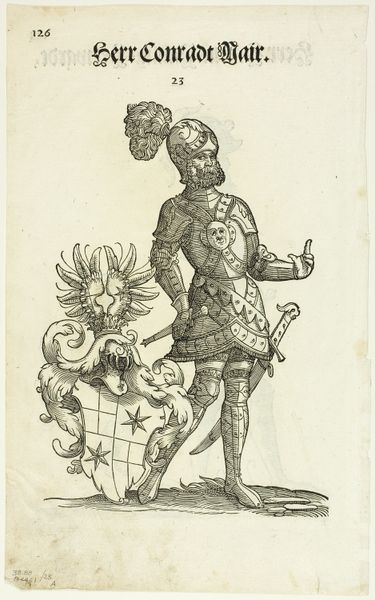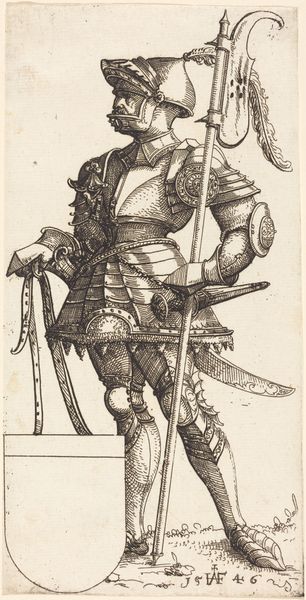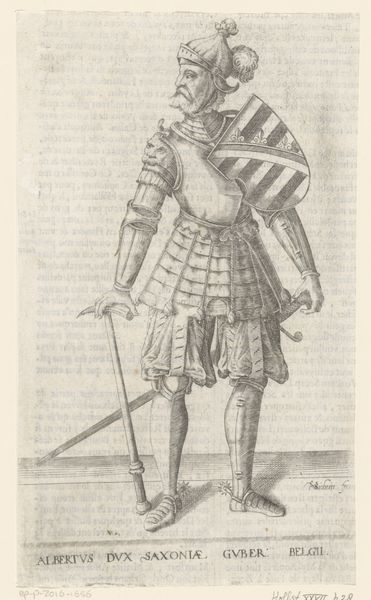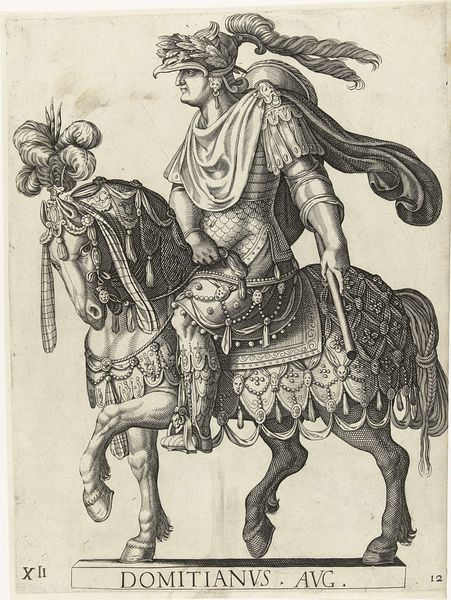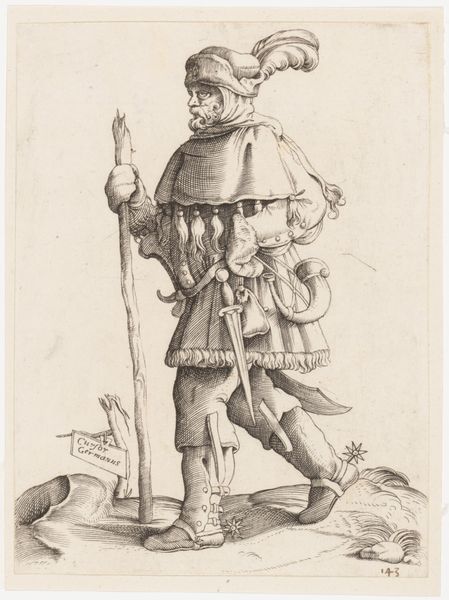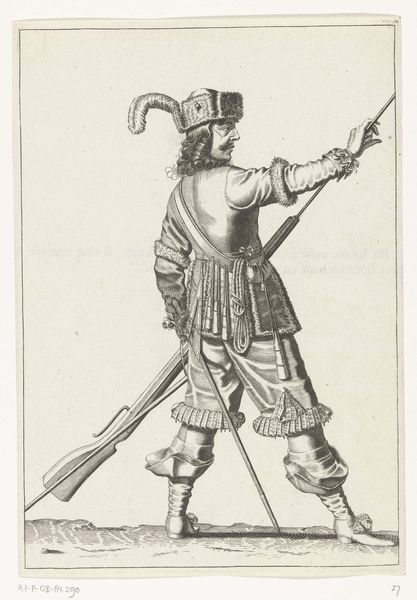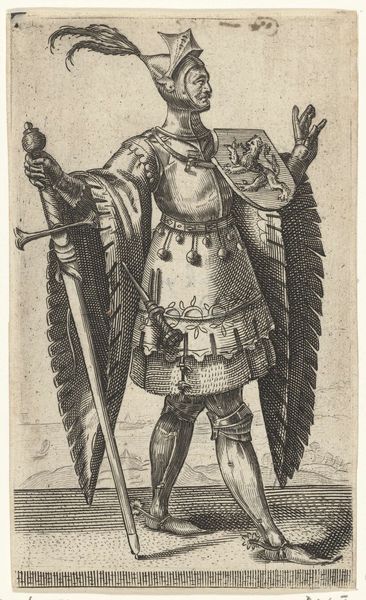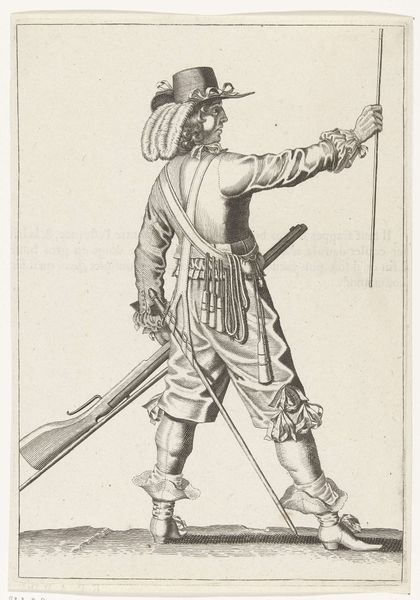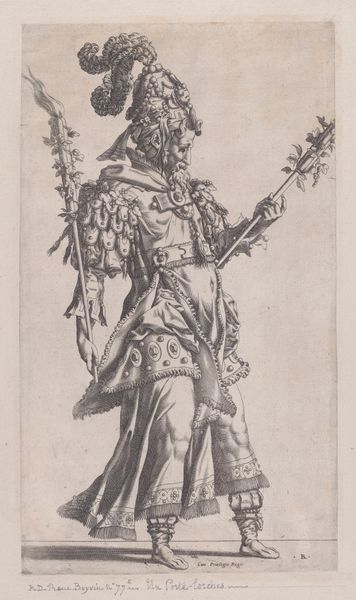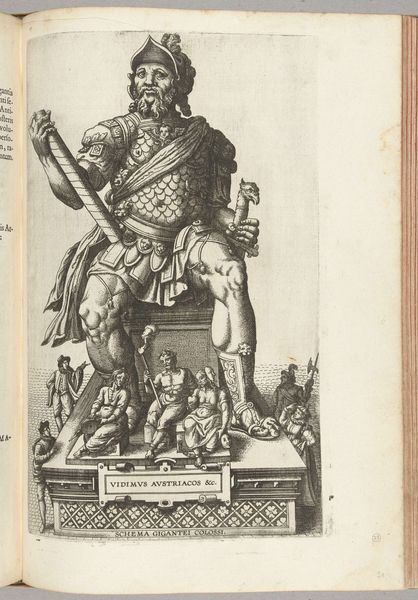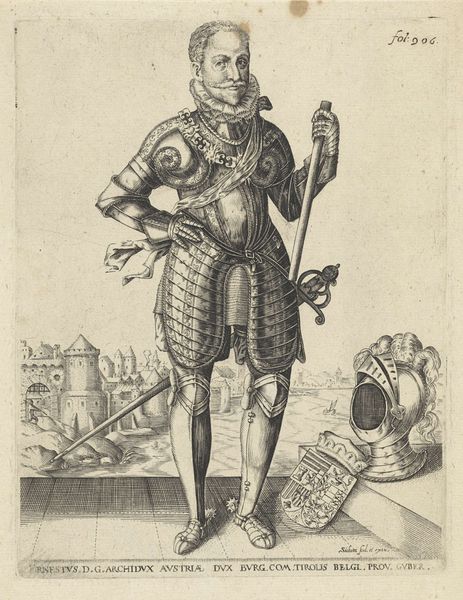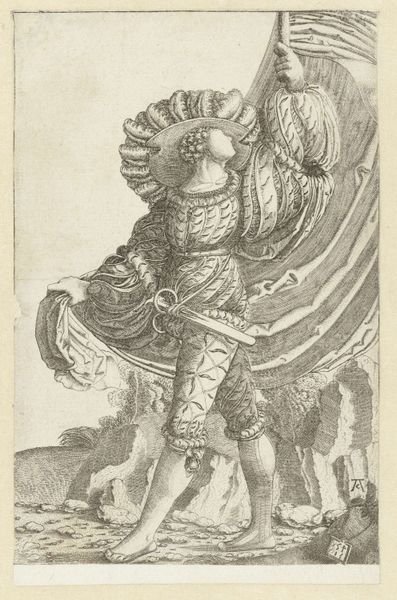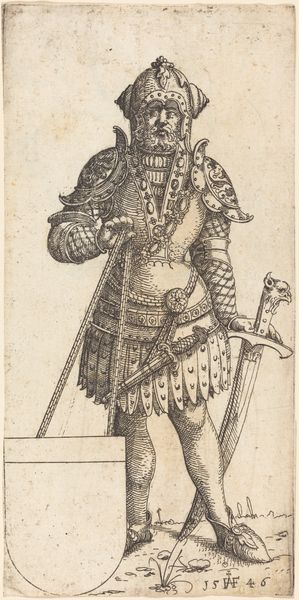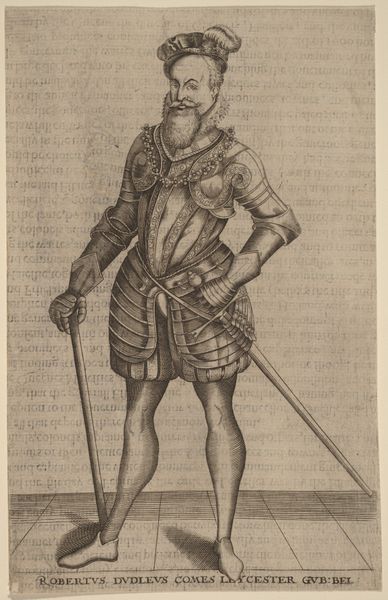
print, engraving
portrait
pen sketch
figuration
11_renaissance
history-painting
northern-renaissance
engraving
Dimensions: height 400 mm, width 270 mm
Copyright: Rijks Museum: Open Domain
Editor: Here we have "Landsknecht with a Glass," an engraving made around 1547 by Rudolf Wyssenbach. The detail in this print is astonishing, especially the figure’s flamboyant clothes and that ornate glass he’s holding. There’s something almost satirical about it. What strikes you when you look at it? Curator: The figure, a Landsknecht mercenary, is certainly eye-catching. What interests me is how Wyssenbach is engaging with the image of power in this period. The Landsknechts were known for their distinctive, often deliberately outrageous, clothing as a form of social defiance, particularly given their common origins. The engraving captures that, but then considers what purpose it may serve. Editor: So, is this portrait about the Landsknecht’s individual power or the power he represents within a social structure? Curator: Precisely! And, in an era defined by shifts in religious authority and the rise of printed imagery, consider this print's potential reach. How does this image, displayed perhaps in a tavern or printed as a broadside, function in shaping public perception? Does the glass, presumably filled with wine, become an explicit social critique when circulated en masse? Editor: It's fascinating to consider this artwork less as a simple portrait and more as a form of early mass communication! The engraving becomes a tool for circulating certain ideas. Curator: Exactly. It reveals how printmaking became enmeshed with social and political dialogues, utilizing potent imagery to influence public understanding. Editor: I'm rethinking how to interpret images from this period! Thanks. Curator: Indeed! Paying attention to the mechanics of visual culture helps unveil the complex networks that shaped history.
Comments
No comments
Be the first to comment and join the conversation on the ultimate creative platform.
